
How to grow a climbing rose in a pot?
Our planting and care tips
Contents
Climbing roses are the perfect candidates to add height and volume to the garden. Their long, flexible stems easily dress up a post or structure and can conceal a wall or fence.
You don’t need a large space or open ground to grow a climbing rose. Smaller varieties can indeed thrive in pots, easily greening up terraces, balconies, small urban gardens, or confined areas.
By following a few simple steps at planting time and with a bit of maintenance, you will achieve beautiful climbing roses in pots.
Additionally, check out our buying guide to help you decide: How to choose a climbing rose?
Which climbing rose varieties are best for pot cultivation?
For container growing, we recommend opting for varieties with rather slow growth and small sizes, with a height at ripeness not exceeding approximately 2 metres. In pots, their dimensions will naturally be more limited than in open ground.
Conversely, avoid larger and more vigorous varieties that can reach heights of 3 to 4 metres.
Consider the following cultivars, for example:
- The ‘Mini Eden Rose’ climbing rose, a small climbing variety ideal for tight spaces, with a silhouette reaching 1.8 metres in height and 1.2 metres in spread. It is adorned throughout the summer with round, plump flowers in a lovely candy pink.
- The ‘Eyeconic’ climbing rose, another miniature version barely exceeding 1 metre in height in a pot. Its charming hibiscus-like flowers add a true exotic touch. This rose offers a long flowering period from spring until the first frosts.
- The ‘Blush Noisette’ climbing rose, an old variety that has the advantage of being low thorned, making it ideal for growing near pathways. The double summer flowering in a soft pale pink exudes a spicy fragrance.
- The ‘Rose de Tolbiac’ climbing rose, offering double pastel pink flowers mixed with apricot and lightly scented. It measures 2 metres in height and approximately 80 cm in spread, flowering from summer to autumn.
- The ‘Florentina’ climbing rose, an ADR rose that is very resilient, producing double bright red flowers in an old-fashioned style. It measures 2 metres in height and 80 cm in spread.
- The ‘Perennial Blue’ climbing rose, with its cup-shaped roses full of vitality all summer long. It is considered a small climber, as it does not exceed 2 metres in height.
→ Also, check out our article: “Which climbing rose to choose for container growing?.
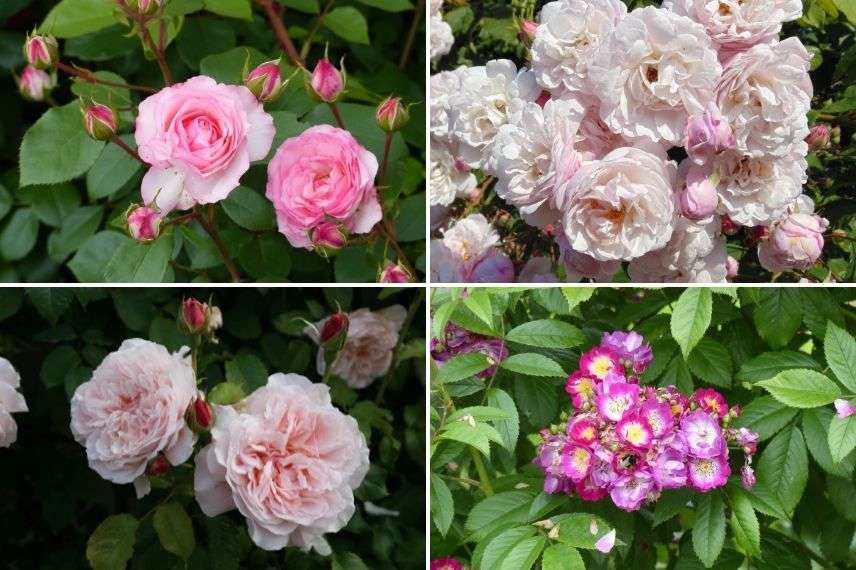
‘Mini Eden Rose’ rose, ‘Blush Noisette’ rose, ‘Rose de Tolbiac’ rose, and ‘Perennial Blue’ rose
Read also
Climbing roses: the 10 best varietiesWhen to plant a climbing rose in a pot?
If your climbing rose is in a pot or container, it can be planted almost all year round, except during frost or summer drought periods.
If you choose a plant with bare roots, usually available between November and March during the dormant period, planting should be done immediately after purchase. This prevents the roots from drying out and encourages successful establishment.
Discover other Climbing Roses
View all →Available in 2 sizes
Available in 1 sizes
Available in 2 sizes
Available in 2 sizes
Available in 3 sizes
Available in 2 sizes
Available in 3 sizes
Available in 2 sizes
Available in 2 sizes
How to grow a climbing rose in a pot?
The choice of container
As the root system of climbing roses is quite substantial, plan for a large container. Ideally, it should have a depth of at least 50 cm, ideally 70 to 80 cm. We recommend choosing the final container suitable for the adult size of your climbing rose right from the start.
It is essential to choose a perforated or slatted container, so that excess water can drain easily without risking damage to the roots.
In terms of material, terracotta allows the substrate and root system to breathe better than a plastic container. A large wooden trough can also be suitable for your climbing rose, but will require regular maintenance to prevent deterioration.

Scene of flowering pots. The climbing roses have been planted in large round pots.
Substrate
Roses are greedy plants, enjoying a rich substrate that is regularly amended to bloom well. Most climbing varieties have repeat flowering, so they need quality soil rich in organic matter throughout their growth.
However, the substrate must remain well-drained to avoid any water stagnation that could suffocate the roots.
At planting, opt for a mixture composed of:
- 2/3 garden soil or potting soil
- 1/3 of rose soil, well-decomposed household compost or mature manure
Planting
A few minutes before you start planting your climbing rose in a pot, soak the plant in a container filled with water, preferably rainwater, to rehydrate the root ball. This will also facilitate the removal from the container.
If your rose is bare-rooted, proceed with root pralinage, using homemade pralin or a store-bought pralin. For more information, we invite you to consult our article: Coating the roots of trees and bushes with pralin.
- Install a drainage layer of about 5 cm at the bottom of the container, made of gravel, terracotta shards, clay balls or pouzzolane;
- Add substrate up to 1/3 of the container;
- Lightly scratch the root ball if your climbing rose was in a container, to free the roots and encourage recovery;
- Trim any broken or damaged branches;
- Place the rose in the centre of the container, slightly angled towards the future support;
- Add substrate without burying the grafting point (the part located between the stems and the roots);
- Firm down and top up with the substrate mixture if necessary;
- Water generously;
- Mulch around the base of the rose to keep the soil cool for longer and prevent the development of adventives (“weeds”). For this, use straw, RCW or any other mulch for roses.

RCW (photo arpent nourricier – Flickr)
Staking
To grow vertically and develop well, the long woody climbing stems of climbing roses need support. They should be trained at the time of planting.
No matter the area where you want your rose to climb, you will need to provide a sturdy support system, such as using a trellis against a wall.
The main framework branches will be attached using flexible but strong ties (string, tie collars, etc.), to allow the stems to develop while being supported. The secondary branches and new stems will be gently arched to create a harmonious silhouette and encourage flowering.
Choose a support capable of bearing the weight of the mature climbing rose and suitable for its size at maturity.
There are also planter types or large troughs with integrated trellis, to which you will only need to attach your climbing rose branches using flexible ties.
For more information, consult our dedicated article: How to tie a climbing rose?
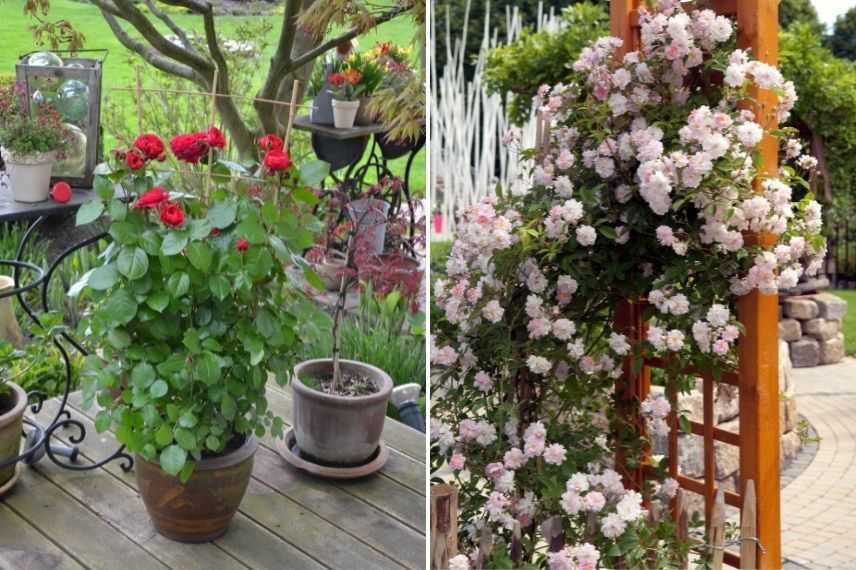 Climbing roses are usually sold with a small structure made of thin stakes that are insufficient for their vertical growth (left photo). It is preferable to train them on a more solid and taller support, such as a trough with integrated wooden trellis (right photo).
Climbing roses are usually sold with a small structure made of thin stakes that are insufficient for their vertical growth (left photo). It is preferable to train them on a more solid and taller support, such as a trough with integrated wooden trellis (right photo).
Exposure
The climbing rose in a pot should be placed in a sunny position (at least 5 hours a day), while avoiding exposure to the scorching rays of midday. In regions with hot summers in southern France, the plant will thrive well in partial shade.
Prefer a location sheltered from prevailing winds and heavy rain.
Care and maintenance of climbing roses grown in pots
Watering
Climbing roses prefer soils that remain cool even in summer, meaning they should keep a moist substrate while always being well-drained.
Container-grown plants suffer more quickly from drying out and lack of water than those grown in the ground. A good mulch, renewed each year, will help retain moisture in the substrate for longer and reduce natural evaporation.
As soon as the top few centimetres of the substrate are dry, water the plant, preferably with rainwater and without wetting the foliage to prevent the onset of diseases. Watering should be done in the early morning or late evening to limit evaporation.
In summer and/or during prolonged dry spells, increase the watering frequency to once or twice a week. You may also install an automatic watering system for pots, particularly useful during extended absences.
If your climbing rose’s container has a saucer, be sure never to let water stagnate by emptying it after about twenty minutes.
Fertilisation
As we noted at planting time, climbing roses require soil rich in organic matter to ensure good growth and flowering. In pots, the substrate tends to lose its nutrients more quickly, so regular fertilisation is even more advisable.
At least once a month at the beginning of the flowering period (between May and July-August), add a good handful of well-rotted compost or manure (available in pellets) or use a special rose fertiliser (follow the dosages indicated by the manufacturers).
For a non-repeat flowering rose (which blooms abundantly only once), fertilisation should be done twice a year, in spring and late summer.
Unless using liquid fertiliser, which should be diluted in the watering water, scratch the surface layer of the soil to mix in the amendments and better distribute the nutrients.
For more information, find all our tips in the dedicated article : Fertiliser for roses.
Pruning
Pruning will help the climbing rose in a pot maintain a beautiful shape and encourage flowering.
As time goes on, remove faded flowers to stimulate the formation of new buds in repeat flowering varieties. Pruning should always be done slightly at an angle above a bud.
Annual pruning is then carried out at the end of winter for repeat flowering roses and at the end of the flowering period for non-repeat flowering varieties. This pruning involves removing dead or damaged branches and shortening the shoots. It is also the time to train the new stems.
Always use clean, sharp tools to avoid injuring the plant or transmitting diseases. Wear gloves and thick clothing to prevent any risk of injury.
Additionally, feel free to consult our related articles:
Topdressing
Every spring, we recommend renewing the top 4 to 5 centimetres of substrate for your climbing rose in a pot: this is known as topdressing.
To do this, simply gently scratch the surface soil, remove it, and replace it with a fresh mix rich in nutrients.
If your rose has grown significantly and the container is proving too small, proceed with repotting at the end of winter or the beginning of spring.
Diseases
Roses are susceptible to fungal diseases, which are particularly noticeable by the spots on the foliage: rust, powdery mildew, downy mildew (black spots), or botrytis (grey mould).
As a preventive measure, avoid wetting the foliage when watering and remove dead leaves as they appear. A well-nourished rose, regularly amended, is also less susceptible to diseases.
At the first signs, use natural solutions such as plant manures, which are usually sufficient to curb the disease.
In case of aphid attacks, spray diluted black soap in warm water (1 tablespoon per litre of water) on the affected parts at the end of the day.
For more details, we invite you to read our article: Diseases of roses.
Wintering
Climbing roses are generally hardy down to -15°C and can spend the winter outdoors. However, a potted specimen will always be more sensitive to cold and moisture than a rose grown in the ground.
In regions with harsh winters, do not hesitate to protect the rose with a winter fleece and increase the thickness of the mulch. The container can also be insulated from the ground and protected by wrapping it in bubble wrap, cardboard, or thick fabric.
- Subscribe!
- Contents
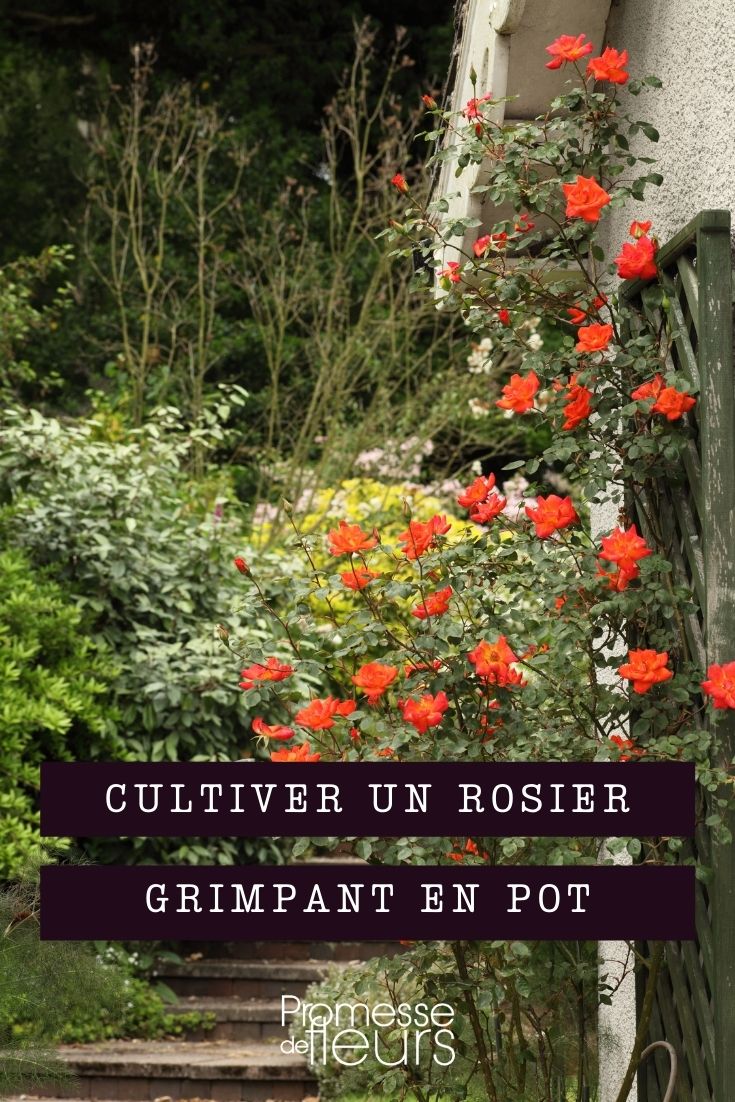



































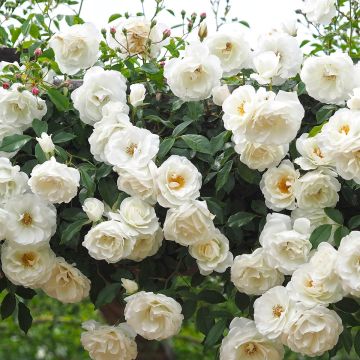


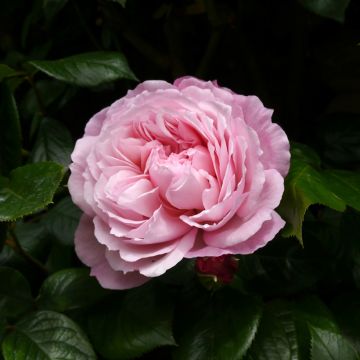

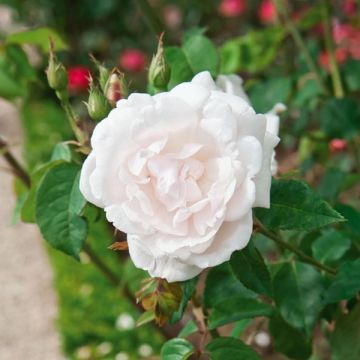
Comments